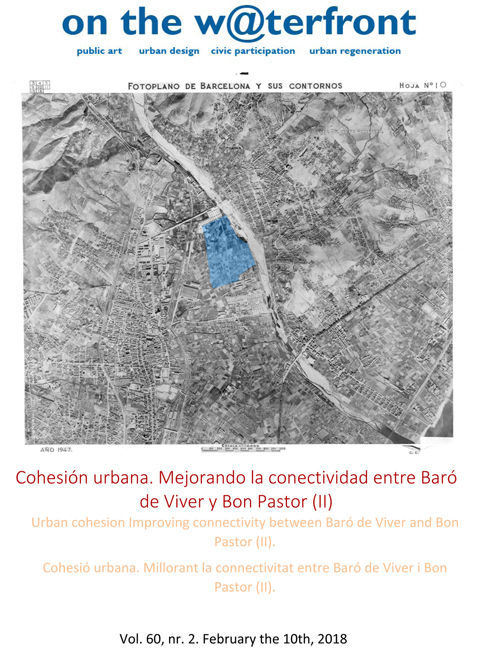Industrial estate: enhancing urban cohesion with sustainable criteria
Keywords:
erritory, Urban and Social Cohesion, sustainability, citizen participation, environmental efficiency.Abstract
Industrial estate: enhancing urban cohesion with sustainable criteria
Contemplating the territory as a network of social relations that transcends geographical boundaries and / or administrative, can approach conceptual schemes that complicate the territory, especially when it is perceived through participant observation and various secondary sources such as primary, the need to connect neighborhoods to achieve a closer territory, compact and sustainable land use planning, in which the polygon is bound no longer as a physical and social border, but as joint bridge between Bon Pastor and Baró de Viver.
Therefore, the industrial area of Barrio Bon Pastor and its strategic location, is a pretext to bring Baró de Viver and Bon Pastor closer. Closer involves knowing both physical barriers and social and hence make urban socio interventions that would mitigate levels of spatial partner and project into a scenario that make visible their practices and implications for the productive and commercial sector for the city segregation, as that tends accessibility and therefore connectivity between Baró de Viver as Bon Pastor and these while the rest of the city.
An intervention in the public space of the industrial estate involves binging and converge both residential dynamic and productive that allows viable processes of urban regeneration, with the premise of urban cohesion, can encourage the scheme of inverted mobility, where the priority is pedestrian, bicycle lane followed, public transport and therefore the private motor transport. In addition to this initiative to prioritize non-motorized mobility, it aims to link through practical design and actions that promotes energy efficiency, as the introduction of arboreal individuals and other local plant elements contribute their textures, smells, colors not only reconfigure the space, but serve to filter the environment, friendlier landscape change and comfort, but additionally granted the estate developments around sustainability.
These urban changes shall aim to maintain the productive and industrial structure as one of the objectives of the Municipal Action Plans, but improving its public space to facilitate urban connectivity and therefore the social and urban cohesion between the two neighborhoods assuming the transition of the industrial estate as a space that commitment to environmental efficiency.
Downloads
Published
How to Cite
Issue
Section
License
The
 licence allows: Share — copy and redistribute the material in any medium or format and Adapt — remix, transform, and build upon the material for any purpose, even commercially.The licensor cannot revoke these freedoms as long as you follow the license terms. Author's rights are protected by the ISSN 1139-7365. On the w@terfront has no restrictions respect the copyright by the authors and does allow authors to retain the publishing rights without restrictions.
licence allows: Share — copy and redistribute the material in any medium or format and Adapt — remix, transform, and build upon the material for any purpose, even commercially.The licensor cannot revoke these freedoms as long as you follow the license terms. Author's rights are protected by the ISSN 1139-7365. On the w@terfront has no restrictions respect the copyright by the authors and does allow authors to retain the publishing rights without restrictions.This journal does not apply any type of charge to the authors for the presentation or processing of the articles.







